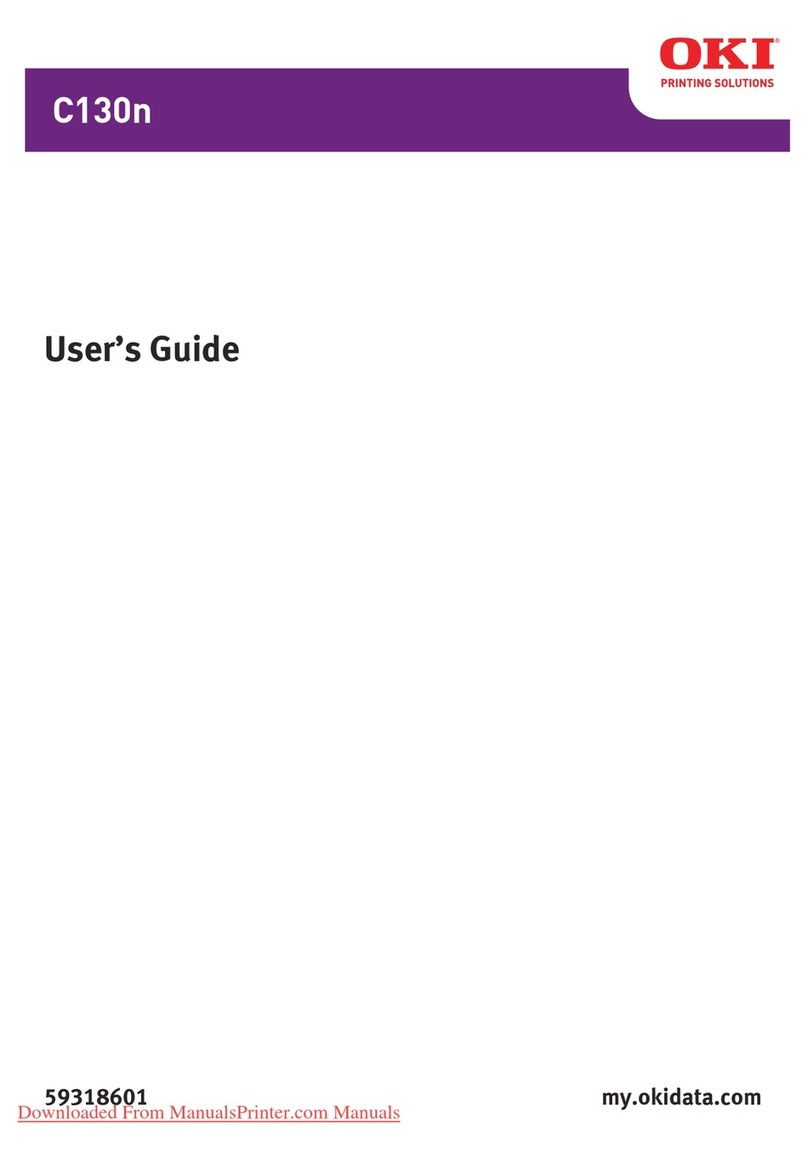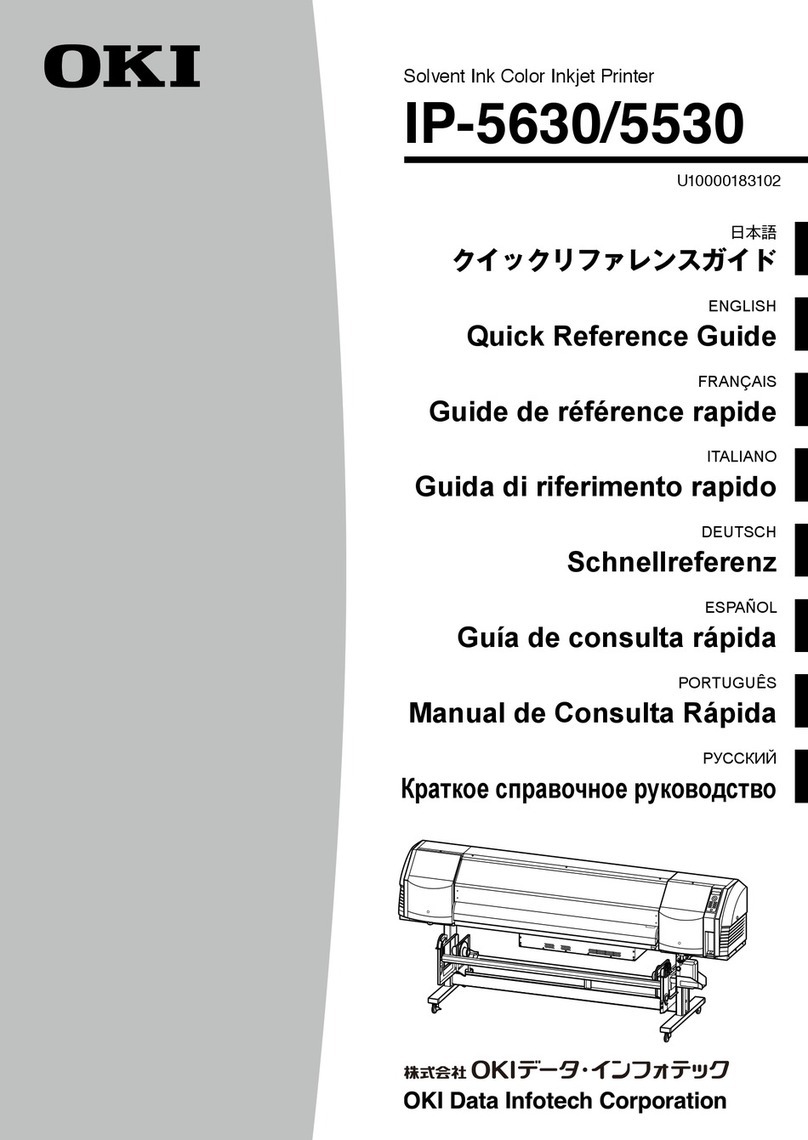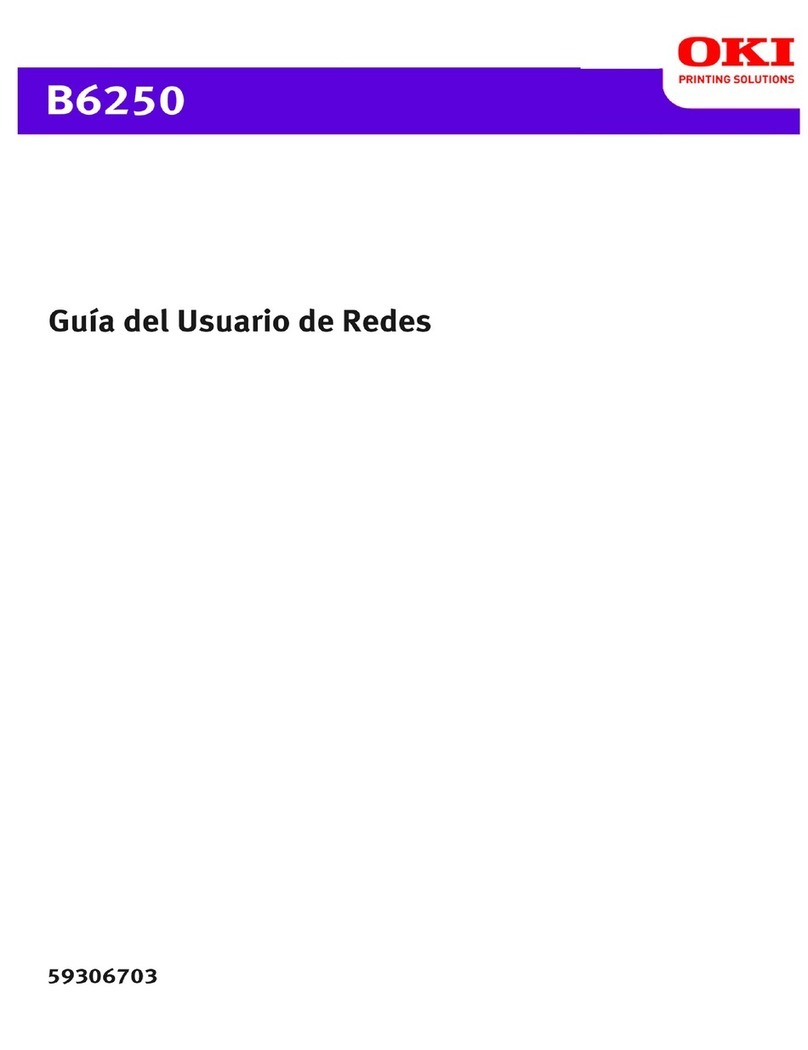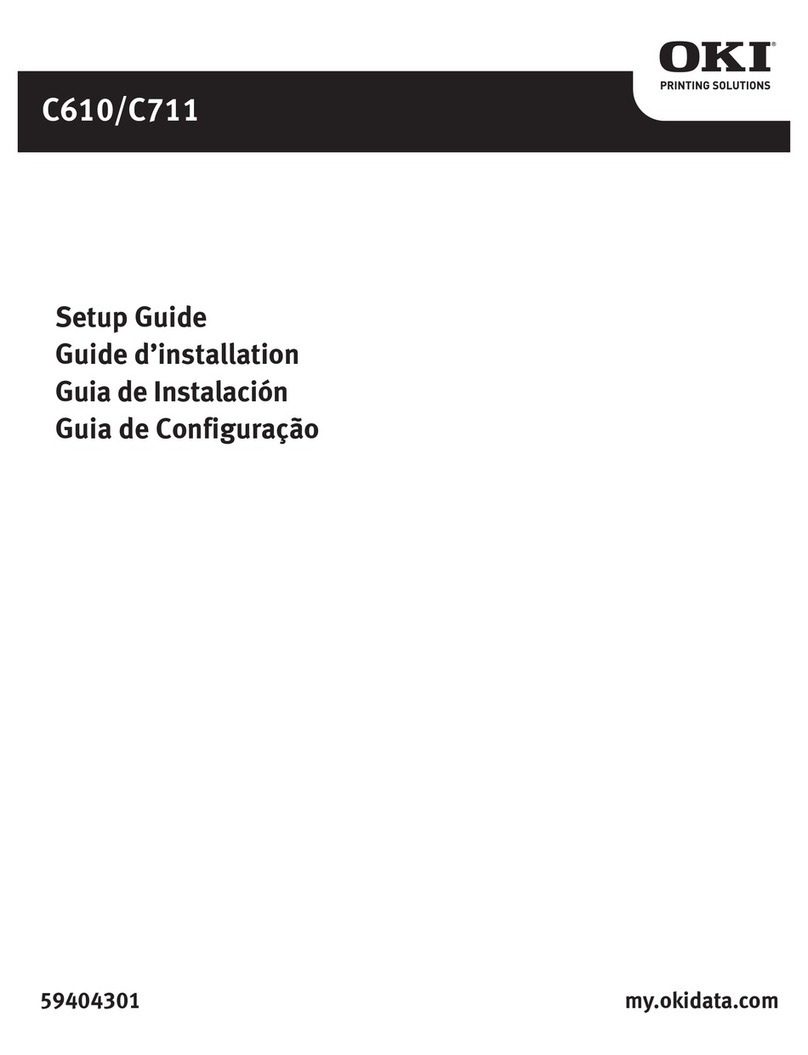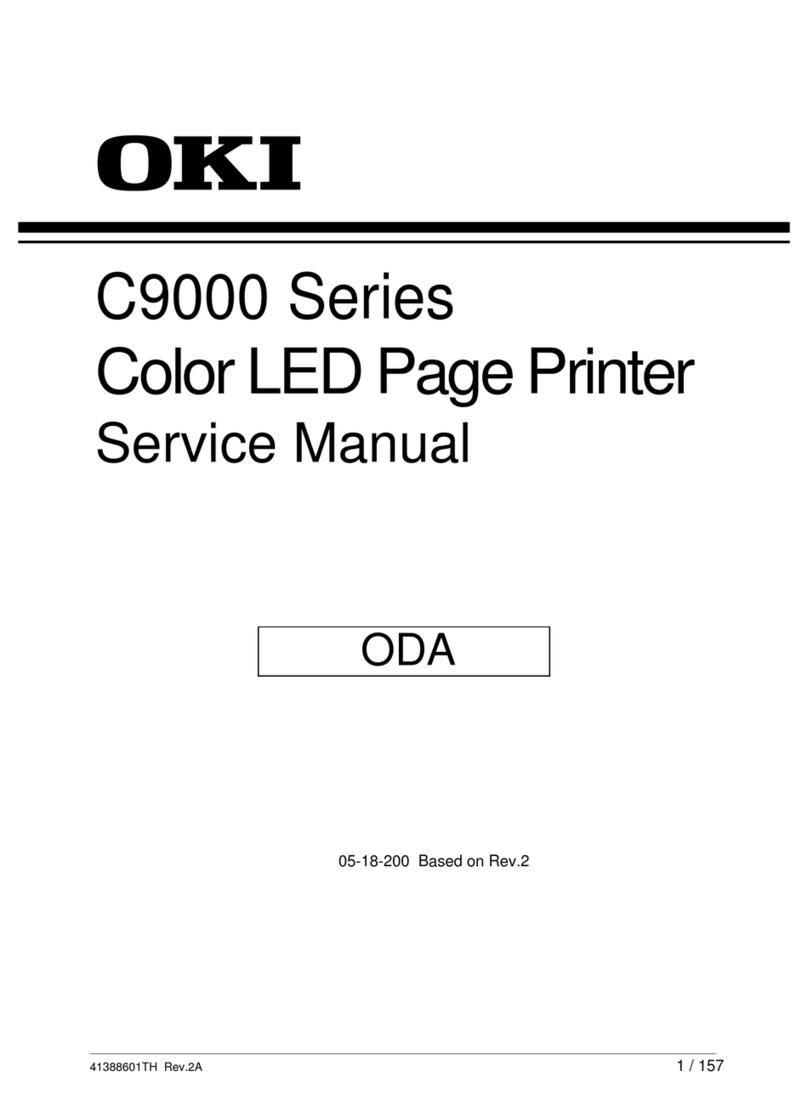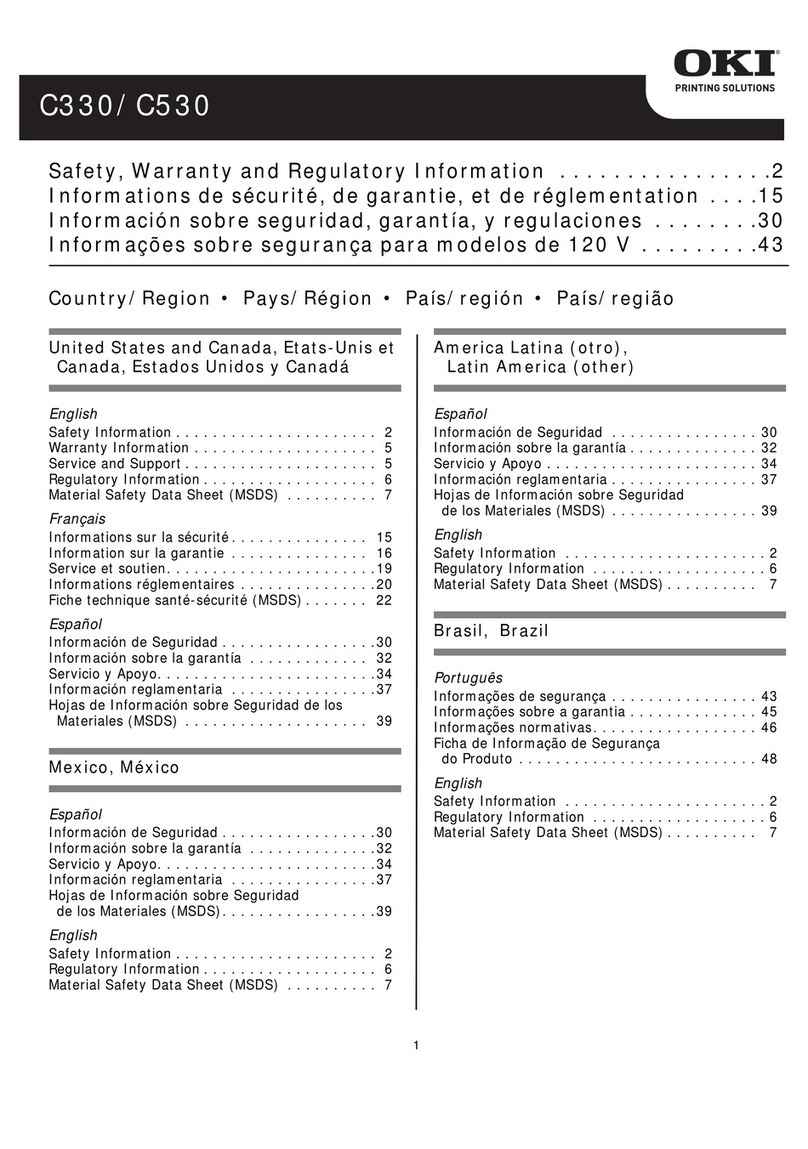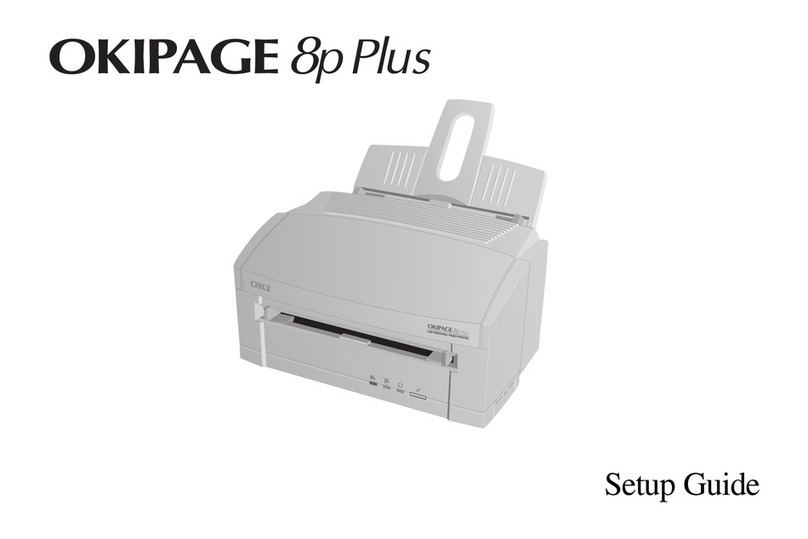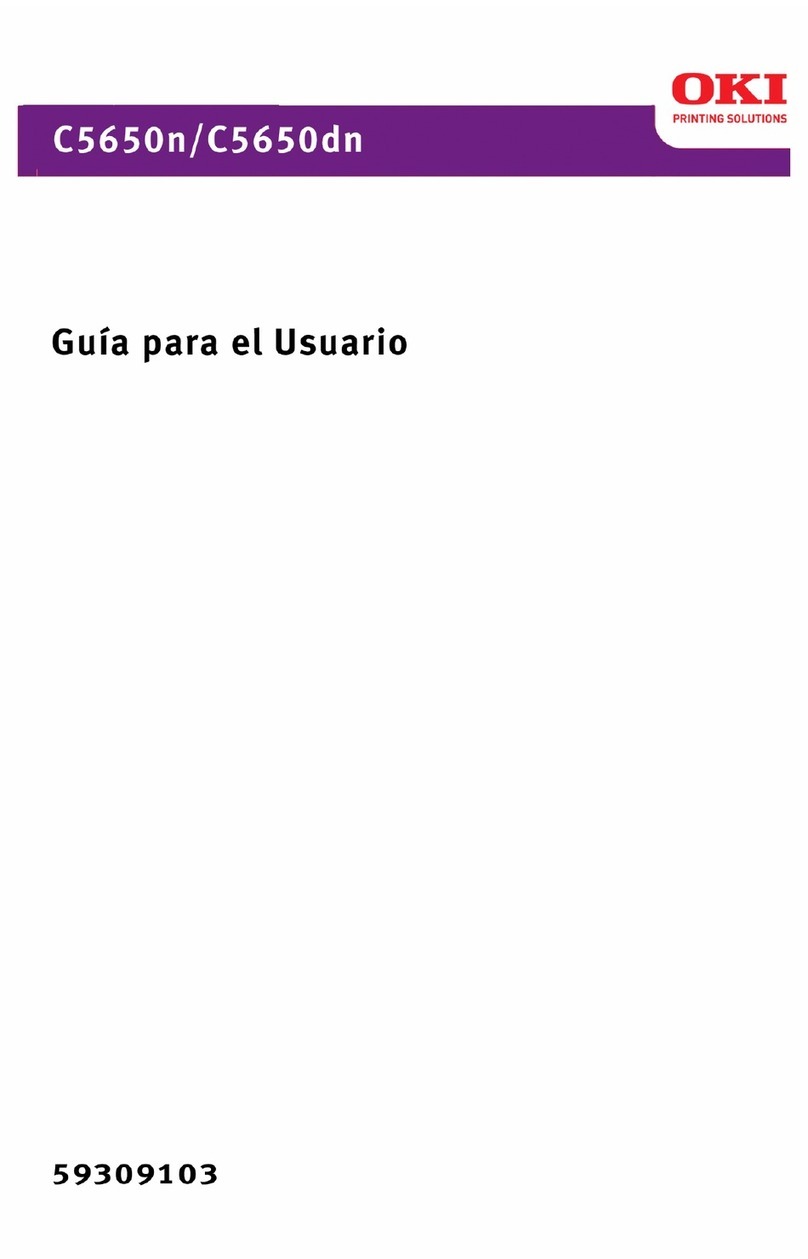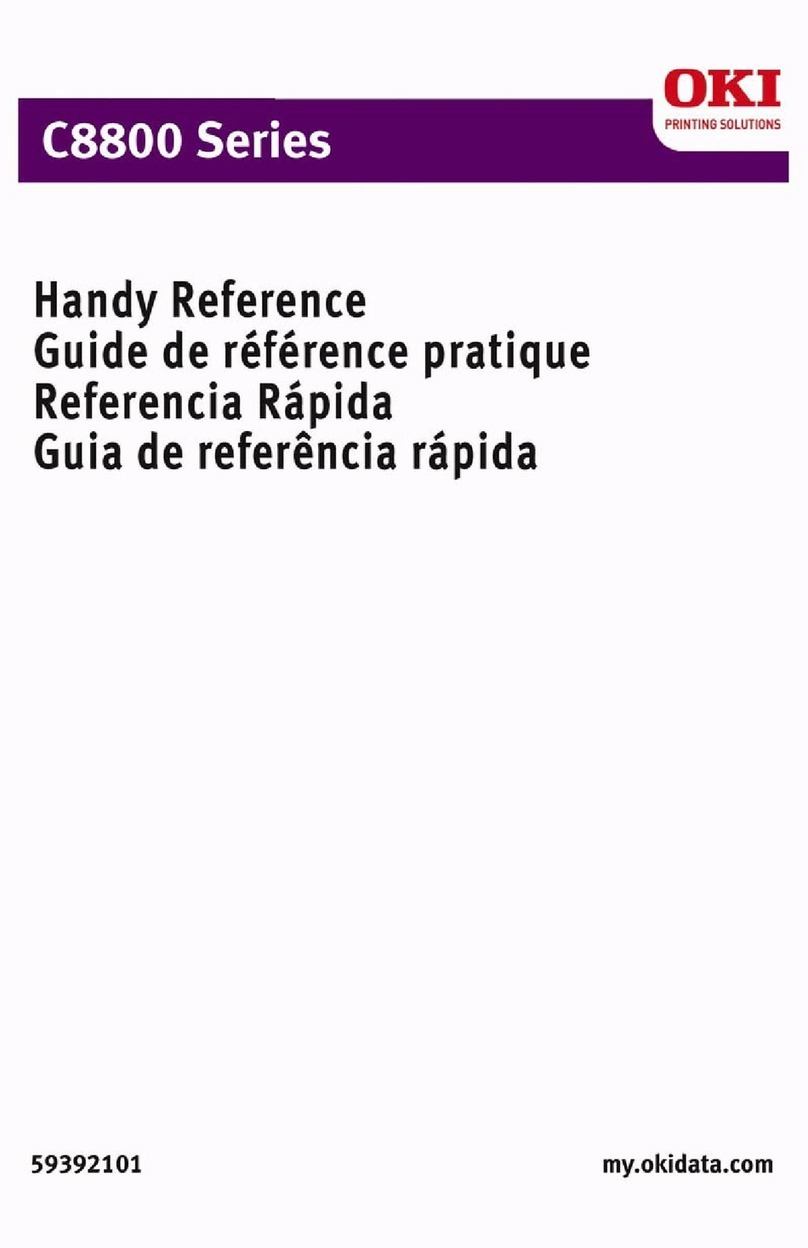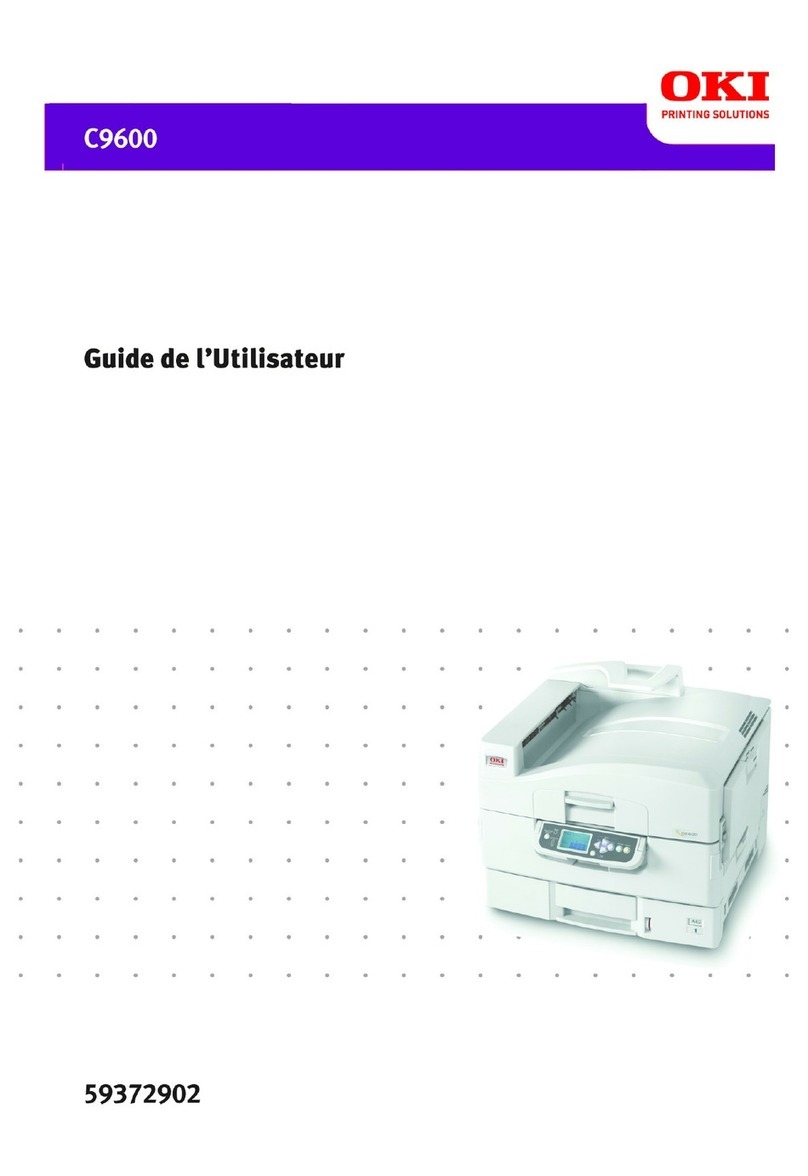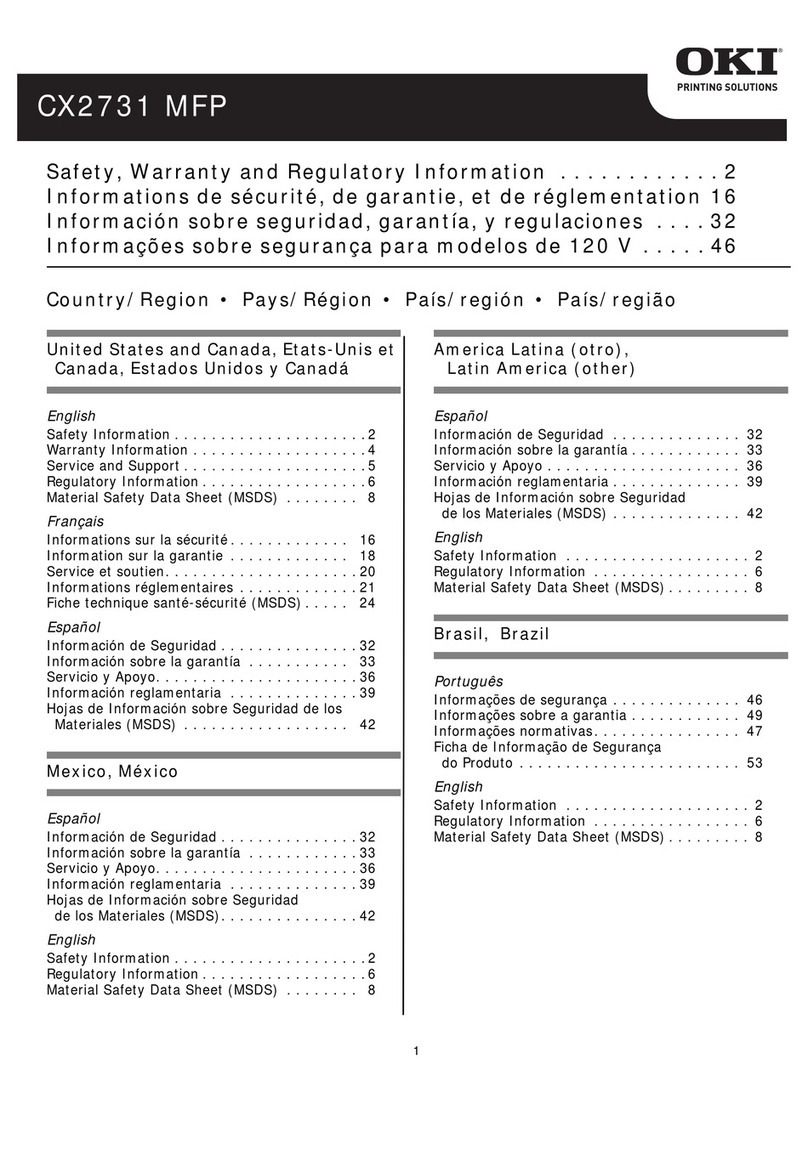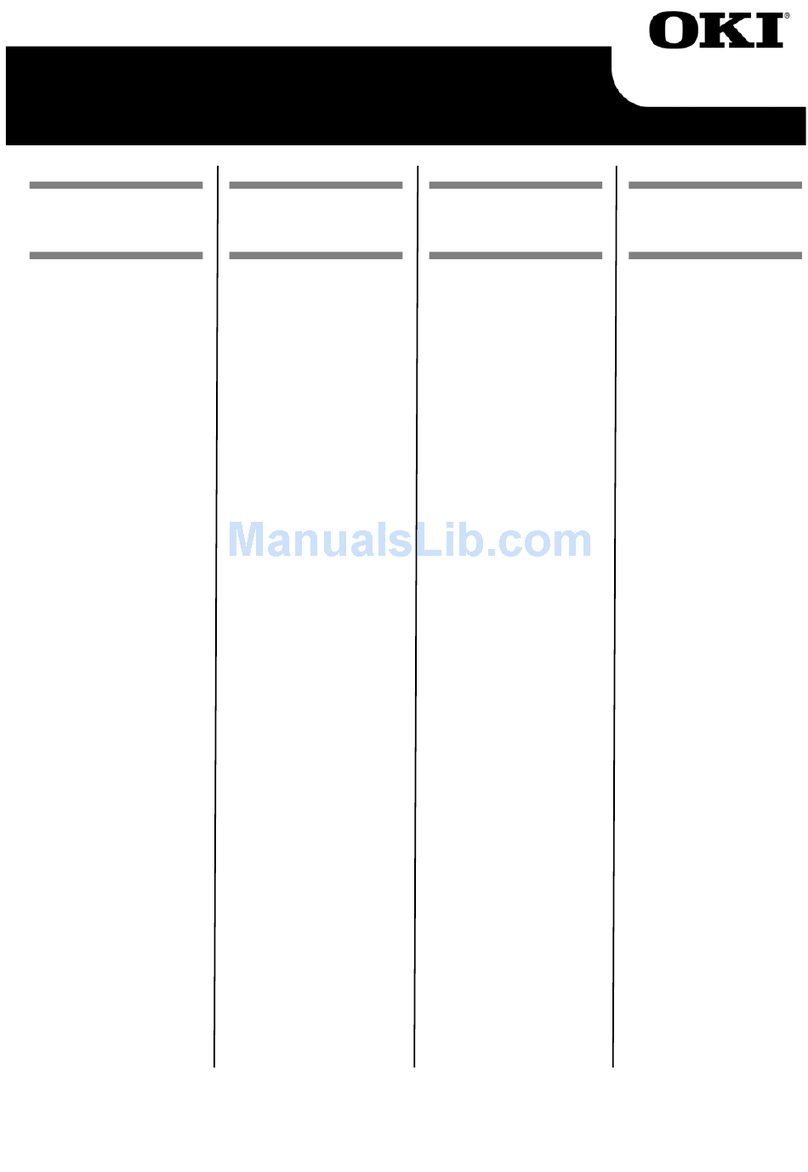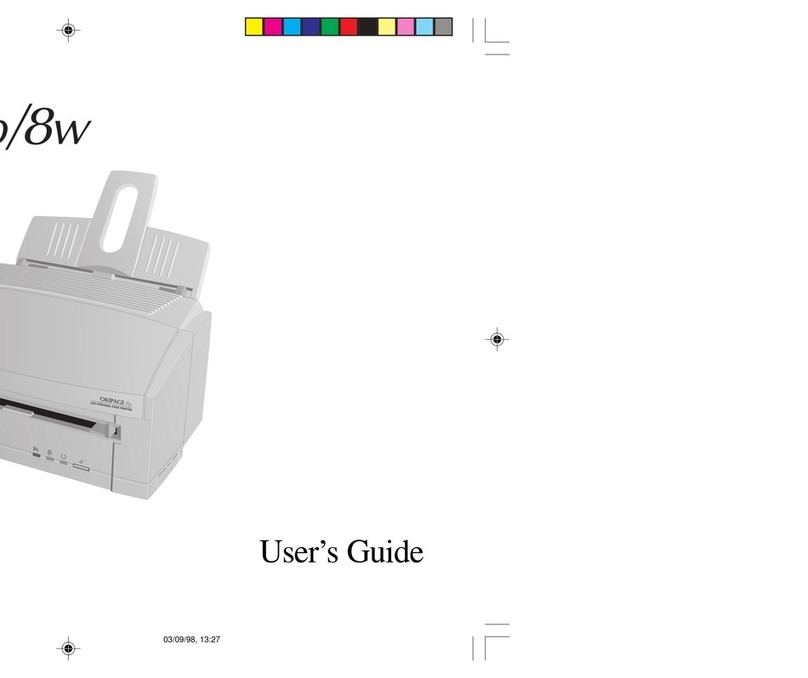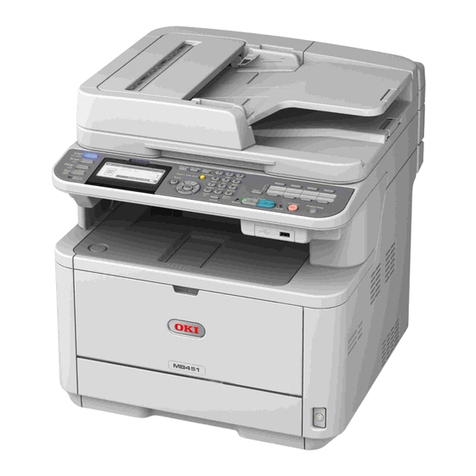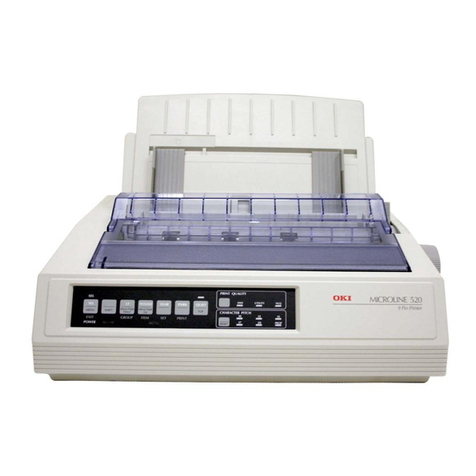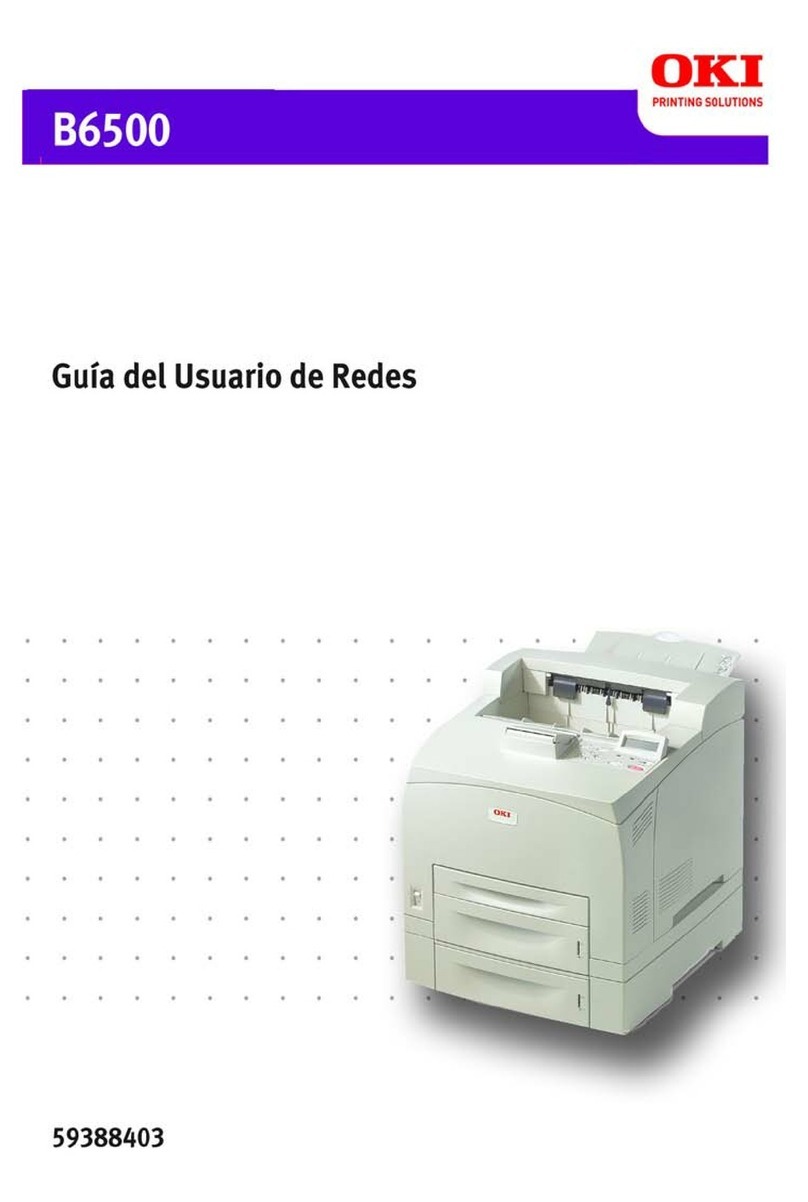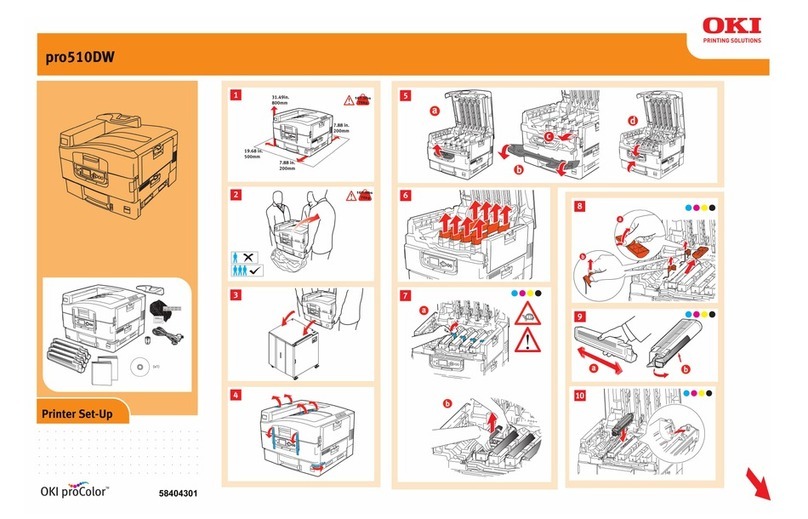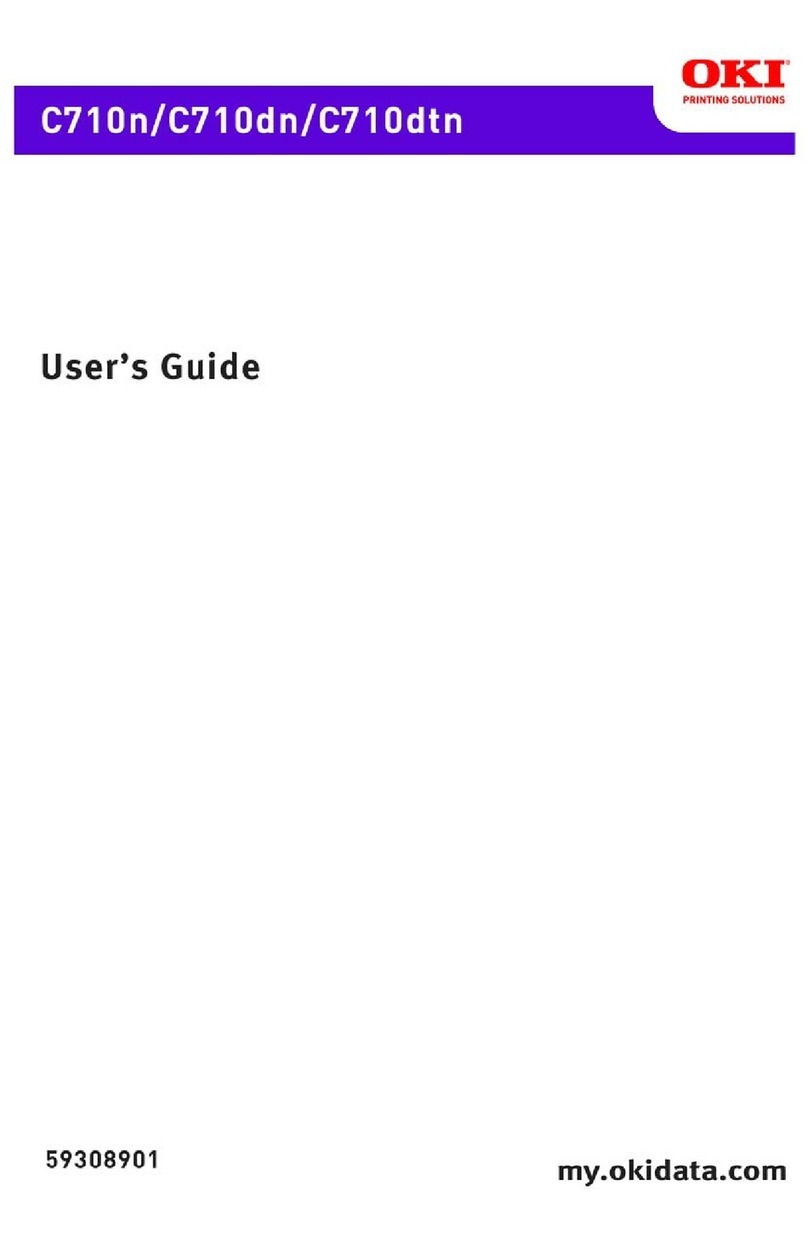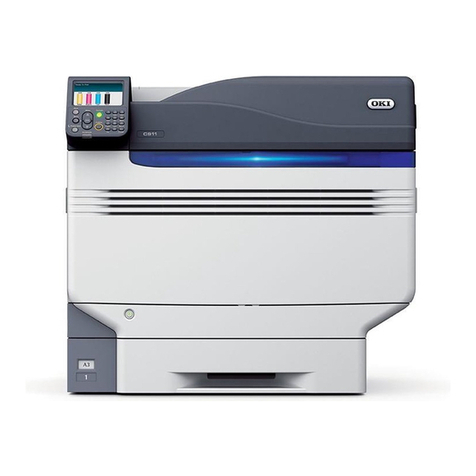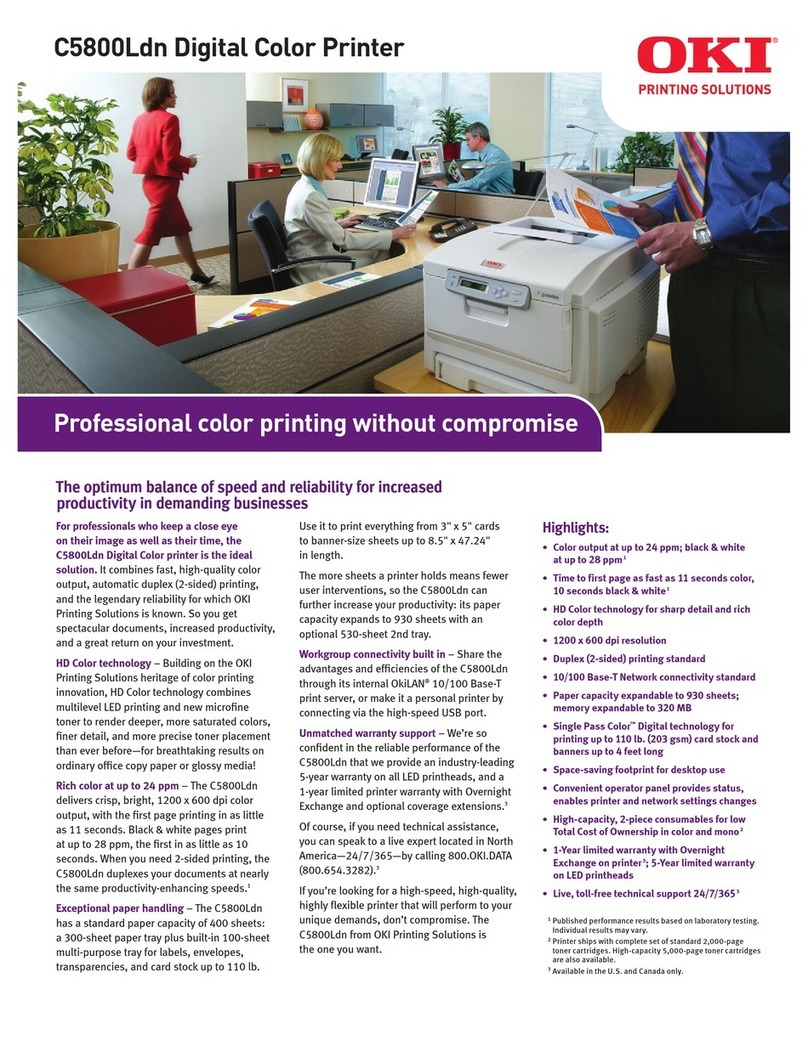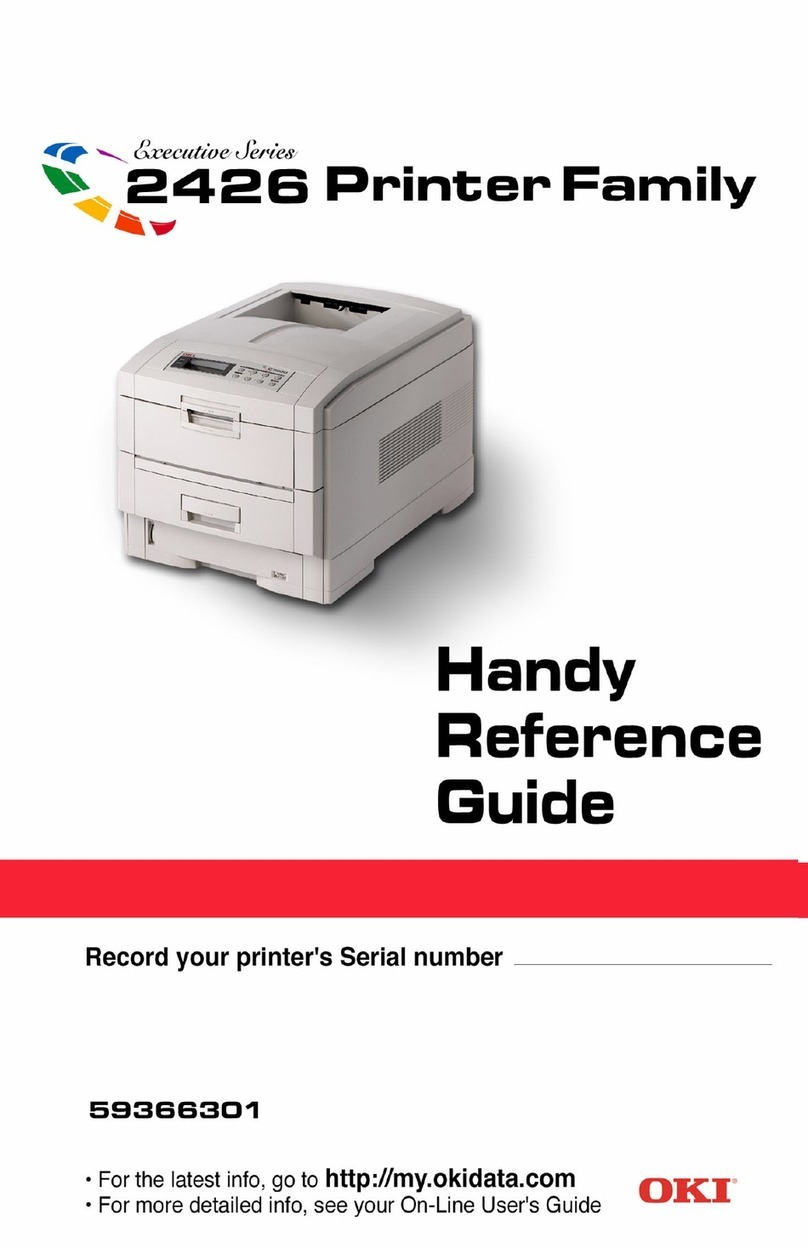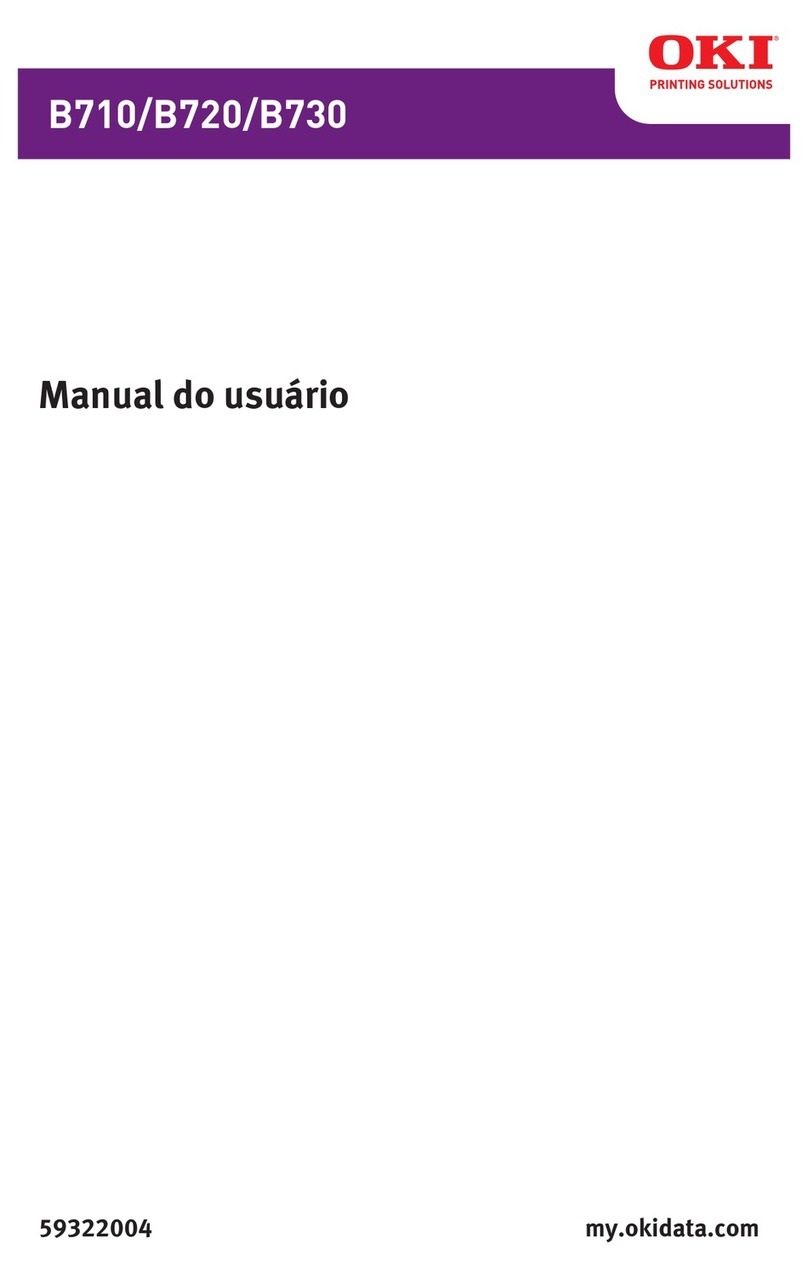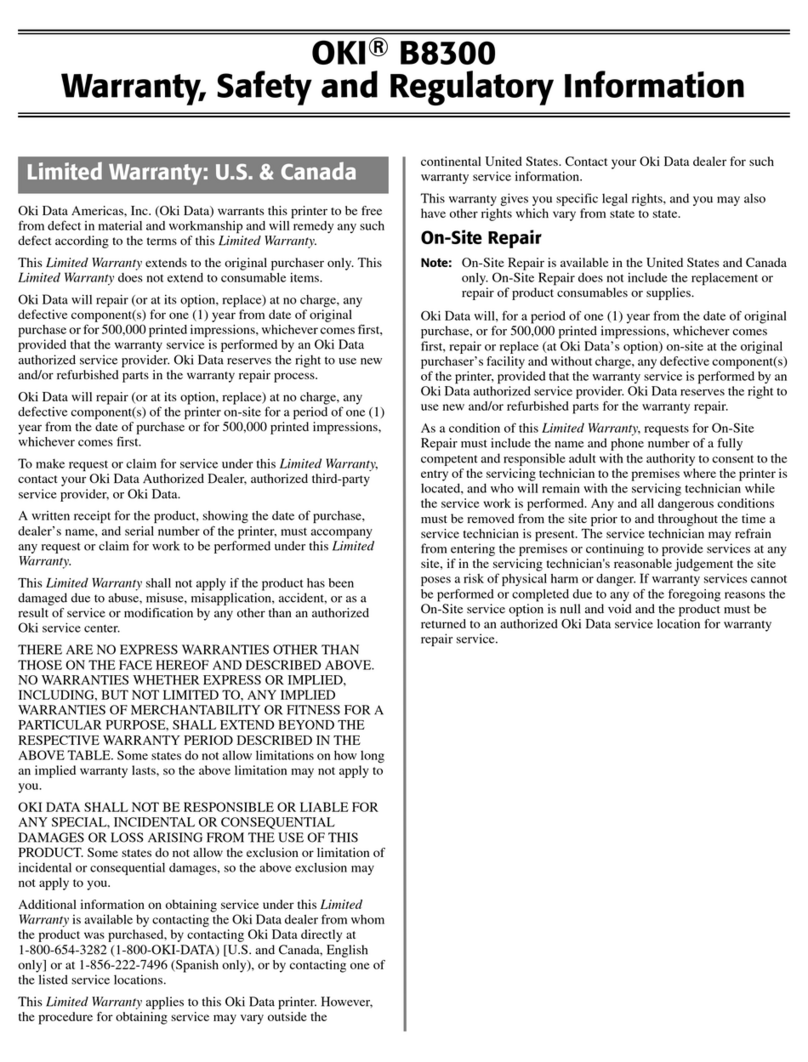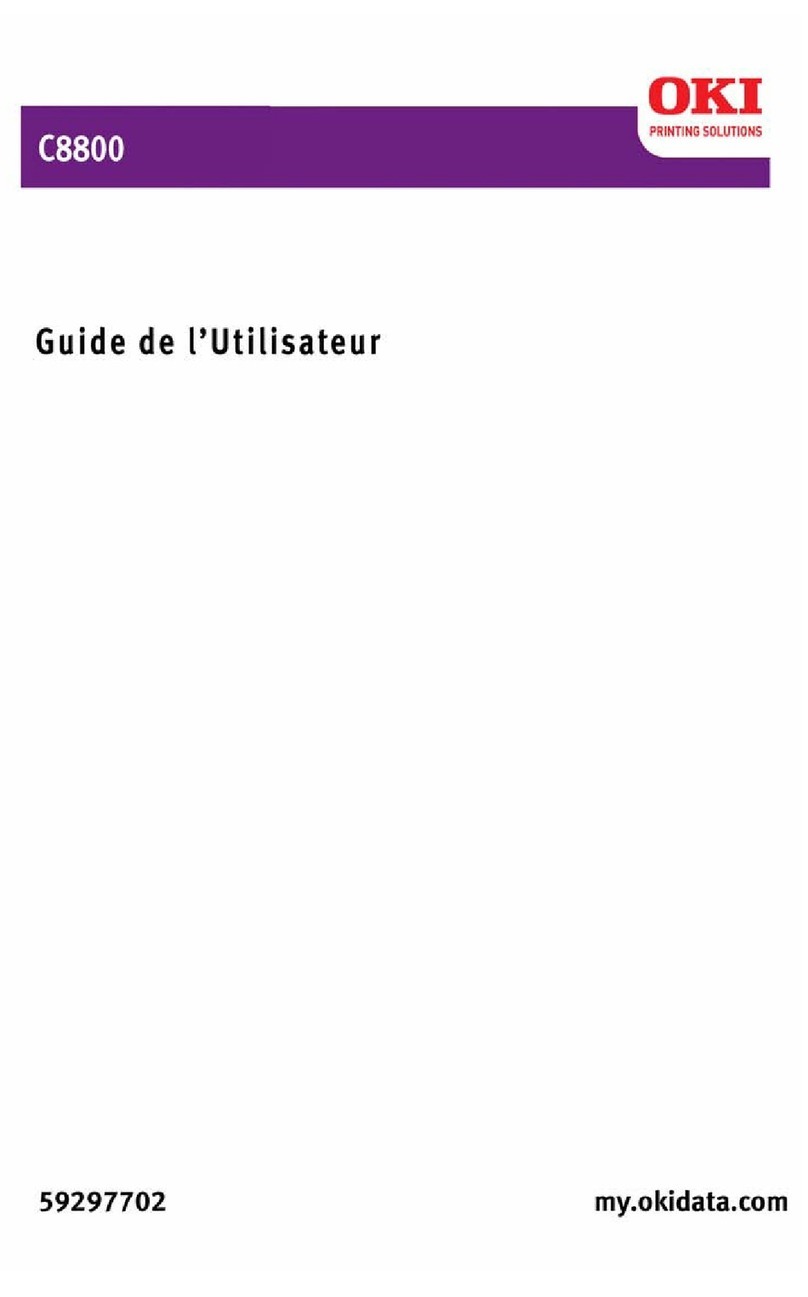
44205401TH Rev.1 4 /
Oki Data CONFIDENTIAL
Index
1. Configuration...........................................................................6
1.1 System configuration............................................................................................7
1.2 The Configuration of printer..................................................................................8
1.3 Optional parts.......................................................................................................9
1.4 Specifications .....................................................................................................10
1.5 Specification of interface ....................................................................................13
1.5.1 Specification of USB interface ....................................................................13
1.5.1.1 General of USB interface.....................................................................13
1.5.1.2 Connector and cable of USB interface.................................................13
1.5.1.3 USB interface signal............................................................................13
1.5.2 Specification of network interface...............................................................14
1.5.2.1 General of network interface................................................................14
1.5.2.2 Connector and cable of network interface ...........................................14
1.5.2.3 Signal of network interface ..................................................................14
1.5.3 Specification of ACC interface ....................................................................15
1.5.4 Specification of parallel interface ................................................................16
1.5.4.1 General of parallel interface.................................................................16
1.5.4.2 Connector and cable of parallel interface ............................................16
1.5.4.3 Parallel interface level..........................................................................16
1.5.4.4 Signal of interface................................................................................16
2. Operating instructions..........................................................17
2.1 Electrophotographic processing mechanism......................................................18
2.2 Printing process..................................................................................................22
3. Set up .....................................................................................33
3.1 Notes and precautions........................................................................................34
3.2 Unpack method ..................................................................................................35
3.3 Setting method ...................................................................................................36
3.4 List of equipments and accessories ...................................................................37
3.5 Assembling method............................................................................................38
3.5.1 Assemble the main body of the printer .......................................................38
3.5.2 Cable connect.............................................................................................44
3.5.3 Optional part installation and confirmation..................................................46
3.6 Setting content print (Configuration)...................................................................57
3.7 Connecting method ............................................................................................58
3.8 User used Paper confirmation............................................................................60
4. Component replacement......................................................61
4.1 Precautions on component replacement............................................................62
4.2 Method of component replacement....................................................................64
4.2.1 Belt unit.......................................................................................................64
4.2.2 Fuser unit....................................................................................................65
4.2.3 Left side cover.............................................................................................65
4.2.4 Right side cover ..........................................................................................66
4.2.5 Faceup tray ................................................................................................66
4.2.6 Rear cover...................................................................................................67
4.2.7 LED Assy/ LED Assy spring........................................................................67
4.2.8 Control PCB................................................................................................68
4.2.9 Top cover Assy............................................................................................69
4.2.10 Top cover ....................................................................................................70
4.2.11 Control panel Assy .....................................................................................70
4.2.12 Board PRG/ LCD........................................................................................71
4.2.13 Frame panel Assy.......................................................................................72
4.2.14 Low voltage power supply/Low voltage FAN/ Hopping motor/ Fuse motor.73
4.2.15 Guide eject Assy/ Color regist Assy/ Board-PRY .......................................74
4.2.16 FAN(Fuser) / Belt motor/ High-voltage board/ Cover open switch ..............75
4.2.17 MPT Assy...................................................................................................75
4.2.18 Cover Assy front/ Board-RSF/MPT hopping roller/
Frame Assy separator/ Feeder Assy regist.................................................76
4.2.19 Board-PRZ/ Liftup motor/ Hopping motor//Paper end sensor/
Hopping sensor...........................................................................................77
4.2.20 Feed roller...................................................................................................78
4.2.21 Shaft eject Assy (FU)/ Shaft eject Assy(FD/ Eject sensor ..........................79
4.3 Oiling spots.........................................................................................................80
5. Maintenance Menu................................................................91
5.1 System maintenance menu (for maintenance engineer) ...................................92
